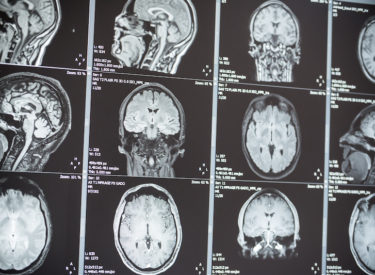

Gliomas account for about roughly 30% of all brain tumors and are classified by cell type, grade, and location. DIPG (diffuse intrinsic pontine glioma) is one particular type of glioma. It is a fast-growing tumor that forms in the brain’s glial tissue, located in the pons. The purpose of glial tissue is to guard the brain’s neurons.
In many types of cancer, the grade and/or stage of a tumor is used to help a patient understand the seriousness of their cancer, the best treatment options, and the best clinical trials that may be available for the patient.
The grade of a tumor is based on how abnormal the tumor tissue appears when studied under a microscope, which can only be determined after a tissue biopsy is obtained. The grade indicates how quickly a tumor is likely to grow and spread. Grades are assigned between 1 and 4, often referenced as Roman numerals (I, II, III, IV). In grade I tumors, cells appear close to normal, and growth is expected to be slow. In grade IV tumors, cells vary significantly from normal cells, and growth is expected to be rapid. When DIPG and DMG tumors are biopsied, they are usually grade III or IV, which behave very aggressively. Although grade can be meaningful for other types of cancer, for DIPG and DMG, grade does not indicate a difference in prognosis.
The stage of a tumor indicates the extent of the cancer, meaning how large it is and if it has spread. Similar to the grading system above, stages are assigned between 0 and 4. DIPG and DMG tumors are staged based on MRI or biopsy results. DIPG and DMG tumor cells are usually found in stages III or IV, are considered more aggressive, and can grow quickly.
Research has recently shown that understanding the presence of a histone mutation in pediatric glioma tumors is more informative than understanding the more traditional grade or stage of the tumor.
A histone is a type of protein that binds to DNA and helps control the activity of genes. Sometimes a mutation (or change) occurs within the histone. Usually, cells recognize when a mutation is trying to cause damage and will repair the change before it becomes permanent. Sometimes, however, a mutation causes a change in the DNA that cannot be repaired and that causes an interruption in cell growth, leading to cancer.
Researchers now know that approximately 80% of all DIPG tissue has the presence of a histone mutation called H3K27M. Having that knowledge about the tumor enables the medical team to target the most promising treatment options.